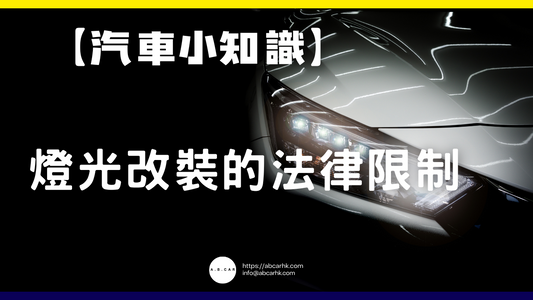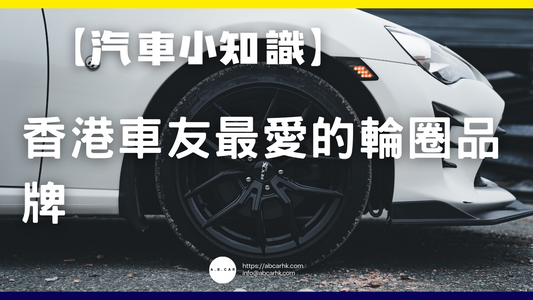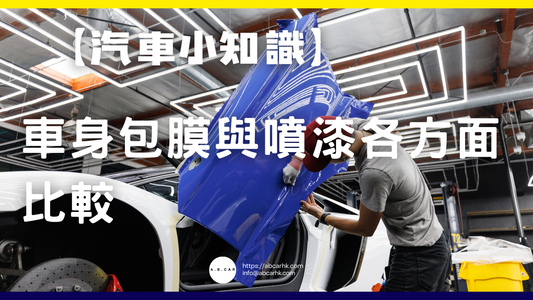[Road Trivia] Why is driving on the left and right-hand drive in Hong Kong?

When driving in Hong Kong, whether in your own car, bus, or taxi, you'll undoubtedly notice that the steering wheel is on the right, and cars drive on the left side of the road . This "right-drive, left-hand" system is the complete opposite of the "left-drive, left-hand" system found in most other countries (such as the United States, mainland China, and much of Europe). Many drivers, tourists, and even novice drivers have wondered: Why is Hong Kong "right-drive, left-hand"? What are the historical, cultural, and legal factors behind this? And what are its far-reaching implications for Hong Kong?
As a car editor, I’ll be using the most detailed article today to give you an in-depth look at the history, technical details, little-known facts, and interesting local driving stories of “right-hand drive and left-hand traffic in Hong Kong”!
1. What is "right-hand drive, left-hand traffic"?
- "Right-hand drive" : The driver's seat (steering wheel) is located on the right side of the car.
- "Left lane" : The car drives along the left lane of the road and overtakes on the right.
- This system is also known as the "British driving style" or "Commonwealth driving practice".
2. Why is Hong Kong a “right-hand drive, left-hand traffic” city?
1. Colonial History: British Institutional Heritage
- Since 1842, Hong Kong has become a British colony.
- The UK has had a "right-hand drive, left-hand drive" road rule since the 18th century. This stems from the days of horse-drawn carriages (see History below).
- Britain promoted this set of regulations in its colonies around the world, including Hong Kong, Macao, Singapore, Malaysia, Australia, India, South Africa, etc., to unify management and facilitate immigration and trade.
- Cars began to appear in Hong Kong in the late 19th century. Laws, traffic design, and driving schools were all based on the British road system and have been used to this day.
2. Legal Continuity
- Hong Kong's Road Traffic Ordinance clearly stipulates that all vehicles must drive on the left and the steering wheel must be on the right.
- After the handover of sovereignty in 1997, Hong Kong maintained its original legal system and traffic rules (i.e. the "original system remains unchanged for 50 years" under the "one country, two systems" principle), so the right-hand drive and left-hand driving system has not changed .
3. Technical and economic realities
- All roads, signs, tunnels, interchanges, roundabouts, pedestrian designs, etc. in Hong Kong are based on "keep left driving".
- Most private cars, trucks and buses are imported from Japan, the UK and Thailand (all right-hand drive and left-hand driving regions). The vehicle supply chain, maintenance, accessories and second-hand market are all accustomed to right-hand drive versions.
- Changing the system is extremely costly and has a huge impact on people's livelihood and the economy.
III. Historical Origins: The Origins of Global "Right-Hand Driving, Left-Way Driving"
1. The Sword and Shield Tradition of the Horse-Drawn Age
- In medieval Europe, most people held swords in their right hands , so when they met on horseback, they would lean to the left so that their right hand could draw the sword for self-defense.
- Most coachmen sit on the right side of the carriage (to facilitate whipping the horses). Driving on the left ensures that when oncoming carriages meet, the distance between the two carriages is smaller, making communication easier.
- At the end of the 18th century, Britain officially legislated that all horse-drawn carriages drive on the left, and this law was subsequently brought to the colonies.
2. The Right-Moving Trend in France and Continental Europe
- During the Napoleonic era, France implemented "driving on the right" and forced conquered areas to follow suit.
- After the United States gained independence, it also adopted the "keep right" rule to distinguish itself from its colonial mother country, Britain.
- Today, approximately 65% of countries in the world (including mainland China, the United States, and Germany) drive on the right and left, while approximately 35% (mostly former British colonies) drive on the left and right.
4. The Characteristics and Impact of Hong Kong's "Right-Hand Drive on the Left" Policy
1. Pavement design
- Traffic lights, intersection dividers, and roundabouts are all designed according to the British model , with the overtaking line on the right and parking on the left.
- On most "single-lane" roads, drivers can more easily observe roadside conditions, improving safety.
2. Impact of vehicle purchase
- Hong Kong mainly imports Japanese cars (Japan drives on the left with right-hand drive), so there is a wide selection of cars to choose from and the prices are reasonable.
- Importing European and American cars into Hong Kong requires custom-ordering right-hand-drive versions, which results in fewer options and higher maintenance costs.
3. Driver habits and challenges for novices
- Drivers who are used to right-hand drive and left-hand driving need to readjust when they go to the mainland or Europe where left-hand drive and right-hand driving are used.
- When learning to drive, novice drivers also need to get used to shifting the gearbox with their right hand (if they shift gears manually). The sense of distance they have when parking is completely different from that in the United States and mainland China.
4. Dual-Region License Plate and Driving Switching
- Drivers on the Hong Kong-Zhuhai-Macao Bridge and the Guangdong-Hong Kong cross-border traffic must learn two systems (right-hand drive on the left side of the Hong Kong section, left-hand drive on the right side of the mainland section). There is a "driving switch zone" on the bridge.
- Interestingly, cross-border drivers are often asked, “Do you get left and right confused?” Experienced drivers say practice makes perfect, but new drivers really need to be extra careful!
5. Editor’s Little-Known Facts and Interesting Stories
1. Why not change the system?
- After 1997, Hong Kong could theoretically follow the mainland's move to "left-hand drive, right-hand drive" but in reality the cost would be enormous:
- All road markings, road signs, traffic lights, lanes, bridges and tunnel designs need to be significantly changed.
- Hundreds of thousands of cars in Hong Kong will have to be converted to left-hand drive, resulting in huge economic losses.
- Switching overnight would cause serious traffic chaos and the safety risks should not be underestimated.
- Therefore, maintaining "right-hand drive, left-hand traffic" is the most reasonable choice and is also one of the "Hong Kong characteristics".
2. Hong Kong driver's license and international driver's license
- Hong Kong driver's licenses can be directly renewed or exempted from written tests in most right-hand drive countries (such as the United Kingdom, Japan, and Australia), making it more convenient to drive abroad.
- However, when driving in left-hand drive countries (such as mainland China, the United States, and France), even if you hold an international driver's license, you must be especially careful about "mirror thinking" when driving!
3. Interesting Stories about Foreign Tourists
- Many foreign tourists (especially those from Europe and the United States) make mistakes when they first arrive in Hong Kong – they tend to look the wrong way when crossing the road, or even drive on the wrong lane.
- The biggest challenge for Hong Kong residents when driving abroad is getting used to the changes, especially when parking and turning.
6. My personal feelings
As a car editor, I have personally experienced different road systems in Hong Kong, Japan, the United Kingdom, Mainland China, the United States, etc.
Driving in Hong Kong feels very natural, with right-hand drive and left-hand traffic. Parking and turning are all smooth sailing. On the other hand, driving in left-hand drive countries can be a bit of a hassle at first, making it easy to misjudge parking and having to remember to look to the right when crossing the road.
But this "institutional difference" is precisely what makes the world so colorful, and it also gives Hong Kong car owners an additional international driving experience!
VII. Summary
Hong Kong's "right-hand drive, left-hand traffic" policy is a historical legacy, a realistic choice, and a regional characteristic.
It originated from the laws and projects during the British colonial period, and has been deeply rooted in people's hearts and integrated into their lives over the decades.
Even after returning to China, Hong Kong still adheres to this system based on technical, economic and social considerations.
This not only affects our car selection, driving learning, and car use, but is also an integral part of local traffic culture and road design.
Next time you’re steering on the right and driving along the left lane, think about the story behind it – this is Hong Kong’s dynamic history!
If you want to know more interesting driving facts and road system stories around the world, please leave a message and the editor will explain in detail!



